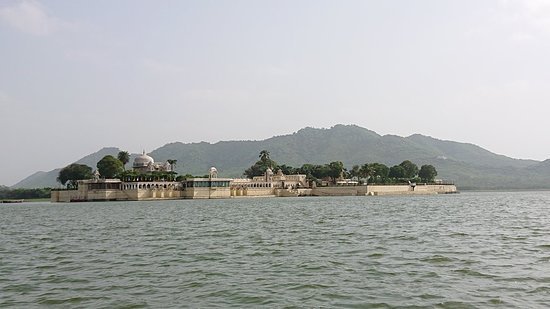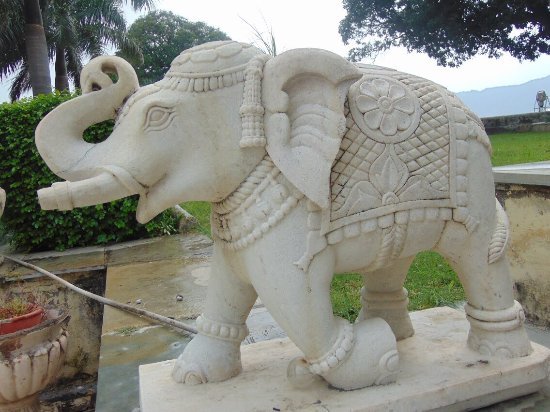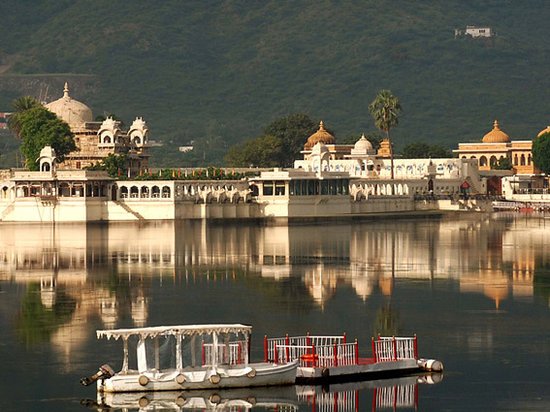The Jagmandir Island Palace is a far-from-the-city palace, actually right in the middle of Lake Pichola in Udaipur. This represents one aspect of utter brilliance oozing from the royal heritage with architectural brilliance. A far more known term to many, it is often referred to as the “Lake Garden Palace.” It has always been a great sight since its presence, mirroring pride and prestige with the Mewar dynasty. What does the Jagmandir Island Palace have that fascinates everybody? Not much in this famous palace but a little something over its history, architecture and modern appeal. A Little History of the Jagmandir Island Palace
Foundatio of Jagmandir
The Jagmandir Island Palace was founded during the early 17th century by Maharana Karan Singh of Mewar.
Although designed for a royal retreat, the actual construction began in 1620 and furthered during the reign of his successors Maharana Jagat Singh I who completed it in 1652. The name of this palace is taken from Jagat Singh because he had this palace designed according to his way and embodied the intricacies of the design with great pomp. The Position of Jagmandir in the Mughal Period
It is a place of immense significance in Indian history, especially during the Mughal period. The palace once gave shelter to the Mughal prince Khurram during some conflict with his father, Emperor Jahangir. People believe that the hospitality provided by the then rulers of Mawar inspired Shah Jahan when he built the Taj Mahal many years later.
Restorations and Renovations Throughout the Centuries

All the renovations and restorations that have been done with Jagmandir over these years retained back its historical essence and thereby made its architectural beauty all the more dazzling. Thus, these efforts kept the palace as an outstanding example of Rajputana grandeur till it made people finally behold in its timelessness of charm.
Architectural Wonders of Jagmandir
The Intricate Work of Marble
But the most imposing feature would be the marble work on the Jagmandir Island Palace. There are beautiful inlays and carvings to give befitting importance to the palace, reflecting the fine craftsmanship of the artisans of the day. Gleaming white marble seems to glow against the blue waters of Lake Pichona-a breathtaking sight.
The Grand Entrance: Darikhana
As one nears the main palace entrance, it is ushered in by a great entrance called Darikhana. This pavilion contains an open courtyard essentially having spectacular views of the lake and of the hills surrounding the Aravalli. By convention, the place known as Darikhana was used as a meeting place wherein the royals discussed matters relating to the state.
Pavilion and Garden Areas
Besides magnificent buildings, there are gardens and pavilions that complete the beauty of Jagmandir. The well-managed gardens here are soothing to spend time around as their lawns groomed properly and imbibed by different species of plants. These green oases do enhance the natural beauty of the island and form a perfect retreat area.
Gul Mahal The Majestic
It is here that the most imposing structure in Jagmandir stood-the Gul Mahal-constructed especially for Shah Jahan. The pavilion is wholly constructed with marble, including the delicate carvings and extremely beautiful interior. The Gul Mahal speaks of the contributions this palace has made toward changing the course of Indian history.
Cultural and Artistic Significance
Influence on Mughal Art and Culture
The style evolved at Jagmandir left an indelible mark upon the art and culture of the Mughal Empire. One could see the whole design of the palace, an element of Rajput as well as Mughal architecture. Intricate carvings, large courtyards, and ornate interiors speak volumes about the artistic sense of the time and left an inerasable mark on later Mughal buildings.
The Palace as an Inspiration for Artists
The long history of Jagmandir finds it inspiring a great number of artists and poets alike. The serenity of surroundings coupled with the grandiose mass of this palace stirred their souls into producing an innumerable amount of art. It finds a place in numerous paintings and literature and symbolizes the zenith of Indian royal heritage.

Architectural Influence on Later Structures
Full of the exuberance characteristic of most Indian architectural styles, the design of the Jagmandir has inspired so many building structures in India which include other palaces and royal residences. Marble has been used and elaborately carved and pavilions and gardens have been set out in strategic positions variously by ways that recall its influence.
Jagmandir’s Role in Modern Times
Transformation into a Luxury Destination
It is a haven of luxury in this modern age whereby visitors of the present time get a glimpse into the resplendent life of royalties. The palace has been modernized and offers one sumptuous hotel, with all the modern amenities retained in the ancient charm. A stay at Jagmandir offers unmatched historical essence and luxury together to the tourists.
Hosting Grand Events and Royal Weddings
Jagmandir also epitomizes the ideal location for grand events and royal weddings. The place is pictorial, with the royal ambiance that the guests need. Be it a royal wedding, any corporate event, or even a private party, the palace provides a beautiful backdrop, adding royalty to an occasion.
Popularity Among Tourists and Film Shoots
Its beauty has not only been confined to the tourists visiting it but also captured the eyes of filmmakers as far as it being a filming hotspot is concerned. The eternal charm in its scenic setting has seen the filming of many movies-Indian and international. Its popularity as a tourist sport increases with each passing year as people grow fond of its special charm.
How to Reach Jagmandir Island Palace
Boat and Ferry Access
Approach to the Jagmandir Island Palace is by boat and ferry from the shores of Lake Pichola. En route to Jagmandir, the enriching picture ride across the lake amidst some of the most striking scenery of the surrounding hills and the City Palace presents a perfect setting. It is the unique experience of the boat ride that gives the glimpse of the palace standing afar.
Best Time to Visit
The winter months from October to March are generally the best time to see Jagmandir. It is pleasant, and hence, it will be very comfortable to explore the palace and surroundings of the place. During summer, it gets very hot. One should accordingly plan a visit to it so as to have its utmost experience.
Important Travel Tips
There are a few travel tips one should bear in mind while visiting Jagmandir. One should wear comfortable shoes as there is a lot of walking involved during the sightseeing of this palace premises. Secondly, one should book the boat ride well in advance during peak season or else one may get to wait for hours .
Things to Do at Jagmandir Island Palace
Royal Dining Experience
Royal dining forms the high point of any visit to Jagmandir. Equally scrumptious traditional Rajasthani cuisine forms the ‘forte’ of this palace restaurant.




